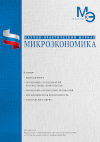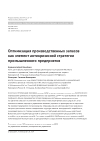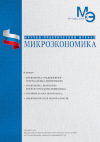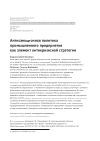Application of the Six Sigma concept in the enterprise’s economic security management system
DOI: 10.33917/mic-1.120.2025.29-43
The article reveals and classifies such concepts as economic security of an enterprise, a crisis management. The main tools for diagnosing crisis phenomena are described in order to identify them early and reduce the impact on the company’s business activities. Special attention is paid to the description and the possibility of applying the Six Sigma concept for crisis management at the process level. Using the example of an enterprise manufacturing equipment for the electric power industry, the application of the Six Sigma concept in the procurement management process is considered. The results of calculating the process quality indicator (σ) are presented, measures for its optimization are proposed, and the economic efficiency of implementing measures is determined.
References:
1. GOST R ISO 13053-1-2015 Quantitative methods for improving Six Sigma processes of the year. Federal Agency for Technical Regulation and Metrology. Moscow: Standartinform, 2016. URL: https://www.rst.gov.ru/portal/gost/
2. Report of the Russian Union of Industrialists and Entrepreneurs on the state of the business climate in 2023. Moscow, 2024. URL: https://rspp.ru/activity/analytics
3. Akberdina V.V. Comprehensive tools for assessing the economic security of economic sectors: regional aspect / V.V. Akberdina, A.V. Grebenkin, O.P. Smirnova. The economy of the region. 2017;13(4):1264-1279.
4. Bezdenezhnykh T.I. Economic security in scientific research of modern foreign authors / T. I. Bezdenezhnykh, E. V. Pecheritsa, E. E. Sharafanova. Technical and technological problems of the service. 2021;3(57):69-74.
5. Bratyakov A.A. On the definition of the concept of «Economic security of an enterprise» in modern Russian science. Scientific research in the modern world: experience, problems and prospects of development: A collection of articles based on the materials of the international scientific and practical conference. Part 1. Ufa: Bulletin of Science, 2019. pp. 161-167.
6. Volkova M.N. Functional directions of the enterprise security service / M.N. Volkova, D.S. Ivannikov. Socio-economic sciences and humanitarian studies. 2015;4:144-147.
7. Gorbachev D.V. An integrated approach to the organization of the economic security service of an enterprise / D. V. Gorbachev, M. V. Kononova. Intelligence. Innovation. Investment. 2013;S:165-170.
8. Gradov A.P., Kuzin B.I., Fedotov A.V. [et al.]. Strategy and tactics of anti–crisis management of the company. St. Petersburg: SpetsLit, 1996. 511 p.
9. Dolzhenko R.A. The essence and evaluation of the effectiveness of the use of optimization technologies «Lin» and «Six Sigma». Bulletin of Omsk University. Series: Economics. 2014;1:25-33.
10. Dyakov S.A., Gorbenko E.A., Zhivitsyna Yu.A., Plyasovitsa I.A. Anti-crisis management as a mechanism for ensuring economic security of an enterprise. Bulletin of the Academy of Knowledge. 2023;2(55):426-431.
11. Endovitskaya A.V., Volkova T.A., Baliashvili D.U. Theoretical and methodological approaches to determining the essence of economic security of an enterprise and its assessment. Modern economy: problems and solutions. 2014;10 (58):62-68.







